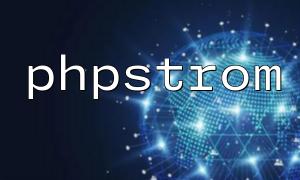PHP Hyperf High-Performance Microservices Architecture Guide
M66
2025-10-20
With the continuous development of internet technology, microservices architecture has gradually become the preferred solution for building complex enterprise applications.
PHP, as a widely used programming language, also plays a significant role in microservices development. This article introduces how to use PHP's high-performance framework Hyperf to build elastic and scalable microservices applications.
What is Microservices Architecture
Microservices architecture is a design pattern that divides an application into small, independent services. Each service can be developed, deployed, and scaled independently, providing greater flexibility and scalability. By splitting a complex monolithic application into multiple smaller services, teams can focus on developing and maintaining each service, improving overall maintainability and scalability.
Why Choose PHP Hyperf
PHP has a mature ecosystem and an active developer community, while Hyperf is developed based on the Swoole extension, specifically for high-performance microservices applications. Compared to traditional PHP frameworks, Hyperf offers better performance and concurrency handling, along with rich components and tools supporting database access, message queues, container management, and more.
Building Elastic and Scalable Microservices Applications
Architecture Planning
Before building microservices applications, the architecture must be planned. Applications can be split into multiple services according to business functions, with each service deployed on a separate server. It is also important to plan the deployment and management of shared resources such as message queues, databases, and caches.
Creating Services with Hyperf
Hyperf provides convenient command-line tools to create new services. Depending on business needs, choose the service type, such as HTTP service or RPC service. After creation, you can start implementing the business logic code.
Decoupling Services Using Message Queues
Message queues enable service decoupling. When a service needs to notify others to perform certain operations, it can send messages to a queue. Other services can subscribe to the messages and process them accordingly. As the number of services increases, expansion or replacement can be done without affecting other services.
Managing Dependencies with Containers
Hyperf provides container components to manage service dependencies. Dependency injection allows for decoupling between services, while containers manage the lifecycle of singleton objects, making code reuse and testing more convenient.
Using Databases and Caches
Databases and caches are usually shared resources in microservices. Hyperf provides comprehensive components for database operations and cache management. You can use an ORM framework to access the database and cache components to improve data read/write performance and concurrency handling.
Achieving Elastic Scaling
Hyperf supports elastic scaling of microservices, allowing dynamic adjustment of service numbers according to load for automatic load balancing. It can also be combined with cloud service auto-scaling features to manage resources elastically.
Conclusion
Building microservices applications with PHP Hyperf can significantly improve performance and scalability. By planning the architecture properly, decoupling services with message queues, managing dependencies with containers, optimizing databases and caches, and implementing elastic scaling, you can create stable and reliable microservices applications that meet business requirements.









